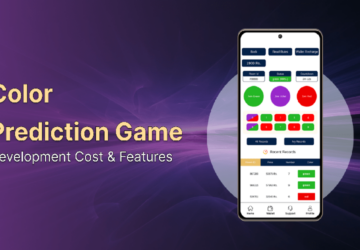Modern application development today rests on scalability and innovation within the rapidly changing tech landscape. With the rapid rise of the adoption of frameworks such as Flutter to build scalable applications, cloud migration solutions provide robust infrastructure and seamless operations.
This convergence between Flutter app development company and cloud migration solutions has redefined how scalable apps are designed and delivered. Let’s dive deeper into how Flutter is driving innovation in cloud migration and the demands that it fulfills for today’s dynamic business environment.
Redefining Scalability with Flutter’s Cross-Platform Excellence
Flutter is one of the best app development platforms as it brings an unmatched quality touch that delivers top-notch apps that work on multiple platforms. Its open-source libraries are changing the interactive behavior of apps.
Unified Codebase for Faster Development
A major characteristic of Flutter is the single codebase that runs well on iOS, Android, web, and desktop. This allows companies to forgo platform-specific development teams and roll out updates faster with more consistency.
Widgets: The Bedrock of Flexibility
Flutter’s widget-based architecture makes it highly flexible and customizable. Developers can design intuitive UI designs while making sure the app’s responsiveness matches cloud-driven back-end functionalities.
This flexibility makes integrating cloud migration solutions easier, as the app’s front end can be easily adjusted to dynamic back-end requirements.
Hot Reload: A Boost to Iterative Innovation
Flutter’s hot reload feature is a game-changer for innovation. It allows developers to make real-time updates to the code and instantly see the results.
This reduces development time and fosters creativity, enabling quicker iterations when integrating cloud features like data synchronization and real-time analytics.
The Role of Flutter in Enhancing Cloud Migration
Cloud migration involves moving applications, data, and workloads from on-premises infrastructure to the cloud.
This transition demands a robust framework to ensure that applications remain scalable, secure, and high-performing. Flutter emerges as an ideal partner in this journey.
Optimized Performance for Cloud-Driven Apps
The applications built using Flutter are optimized for high performance because of Dart, the programming language that supports it.
The compilation process in Dart ensures faster execution and less memory usage—very important features for cloud-based applications where performance is directly proportional to user experience.
Simplified API Integration
Cloud migration solutions often involve integrating APIs to connect various services and platforms. Flutter simplifies this process with its comprehensive library support.
Whether it’s Firebase for real-time databases or AWS for cloud storage, Flutter’s robust tools make it easier for developers to integrate APIs seamlessly.
Real-time updates and Synchronization
In a cloud environment, real-time updates are essential to user engagement. Flutter’s reactive programming model enables apps to adapt to dynamic updates efficiently.
When syncing data between devices using cloud services, the feature becomes indispensable, ensuring users always have access to the most recent information.
Streamlining Development with Flutter and Cloud Integration
The integration of Flutter and cloud migration solutions creates a development ecosystem that prioritizes efficiency, scalability, and cost-effectiveness. Here’s how this integration is transforming the development process:
Scalability Without Compromises
Flutter app development company enables the production and design team to adapt to the growing user needs. While cloud platforms like AWS, Azure, and Google Cloud offer immersive scalable solutions it also allows businesses to grow without losing their touch in performance.
Cost-effective development and Deployment
Development and operational cost savings are a significant advantage because Flutter uses the same codebase for all platforms and the cloud’s pay-as-you-go model.
An app development company can deliver quality applications at reduced overhead. This makes Flutter a cost-effective solution for startups and enterprises alike.
Secure and Reliable Operations
Security is one of the biggest concerns in cloud environments. The architecture of Flutter combined with robust cloud security protocols ensures the integrity of data and secure communication.
Features like end-to-end encryption, authentication services, and firewalls can be seamlessly integrated into apps to build trust in users.
Why Flutter is the Future of Cloud-Ready Apps
The future of Flutter app development company with cloud migration solutions. Increasingly, businesses are opting for this model to outperform the market. Here are some compelling reasons why:
Faster Time-to-Market
Flutter’s efficiency and the cloud’s scalability enable faster development cycles. This quick turnaround time helps businesses launch apps sooner, keeping them competitive and responsive to market needs.
Enhanced Collaboration
The collaboration between Flutter and cloud migration services provides an opportunity for the teams to work in cohesion from anywhere. It helps with real-time updates and cloud repositories that ensure all the team members are on the same page.
Future-Proof Technology
Flutter and cloud services are constantly being developed, making businesses that invest in this technology future-proof. With regular updates and an ever-growing developer community, new trends and features can be easily adopted without drastic overhauls.
Overcoming Challenges in Flutter and Cloud Integration
While the integration of Flutter and cloud migration solutions offers numerous benefits, it is not without challenges. Overcoming these challenges is essential for successful implementation:
Data Latency
Cloud-based apps often suffer from data latency issues. To counter this, developers can implement caching mechanisms and optimize APIs for faster response times. Flutter’s efficient architecture helps minimize these delays, ensuring smoother user experiences.
Cross-Platform Consistency
Maintaining consistency over platforms while migrating to the cloud is tough. Flutter’s unified code base presents one option for avoiding such an issue, but repeated testing will be necessary for seamless functionality on all devices.
Achieving Customization with Scalability
Flutter provides extensive flexibility in customization, but by complicating the code base, scalability is defeated. The balance between unique features and scalable architecture is important for long-term success.
Conclusion
The fusion of Flutter and cloud migration solutions has redefined how scalable apps can be developed and deployed. Combining Flutter’s cross-platform abilities with the scalability that cloud infrastructure allows, businesses now have the freedom to create innovative applications that cater to modern demands.
Unlocking unprecedented opportunities for the Flutter app development company by incorporating next-generation cloud solutions in the approach of developing an application can open doors to new, more effective means of delivering a wide range of digital transformations cost savings to scaling capabilities.








